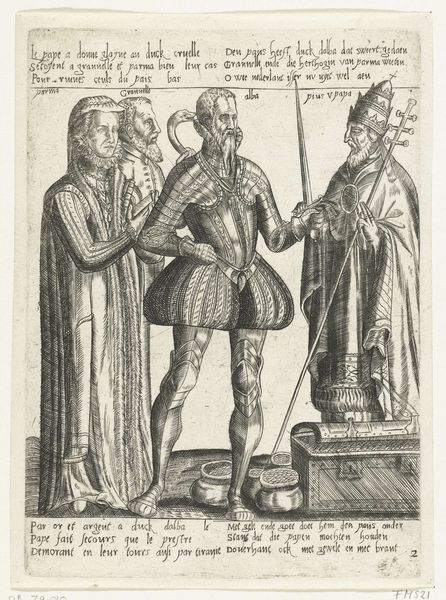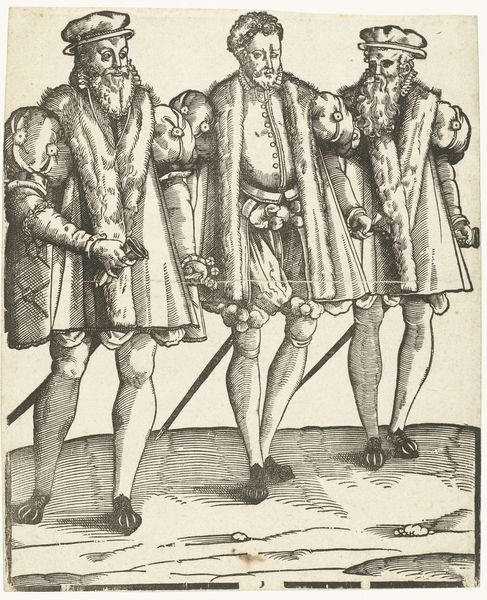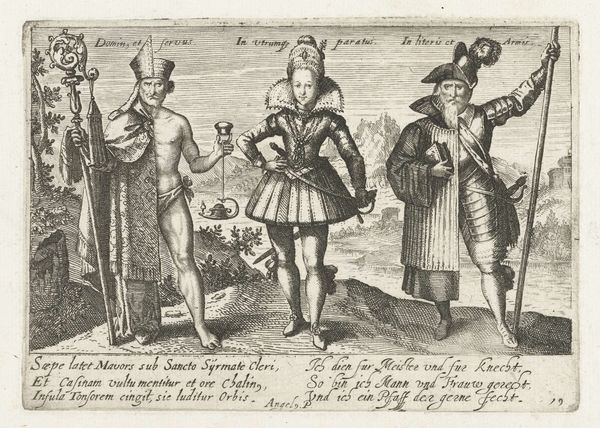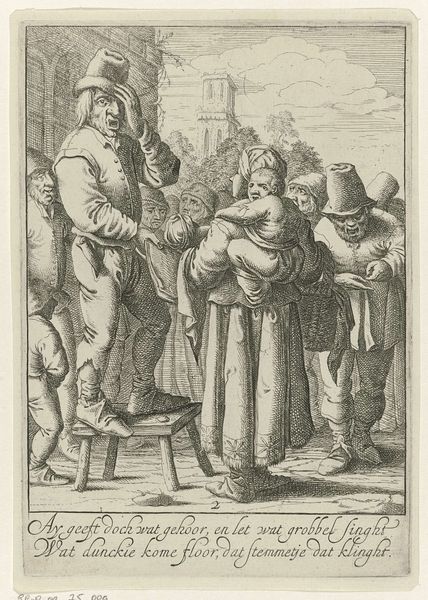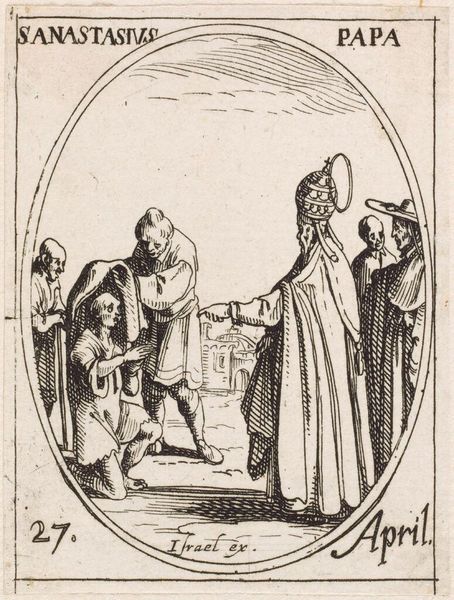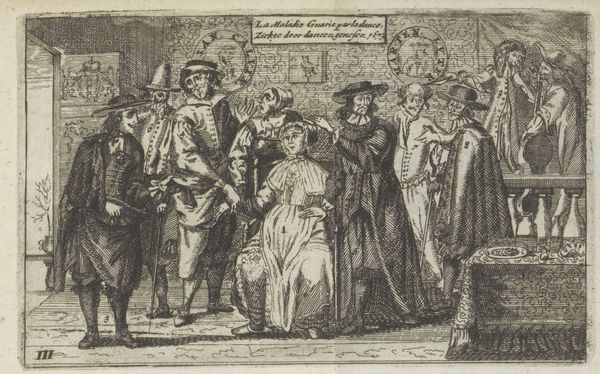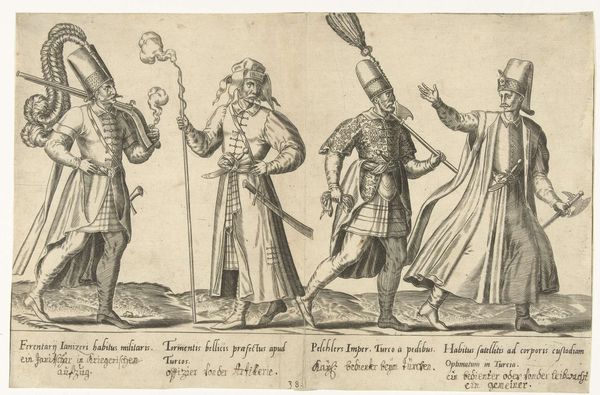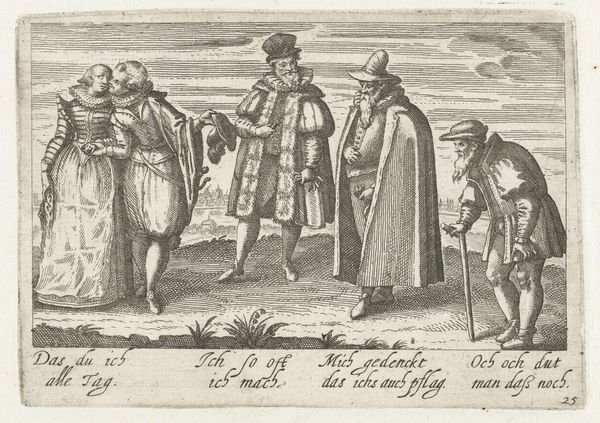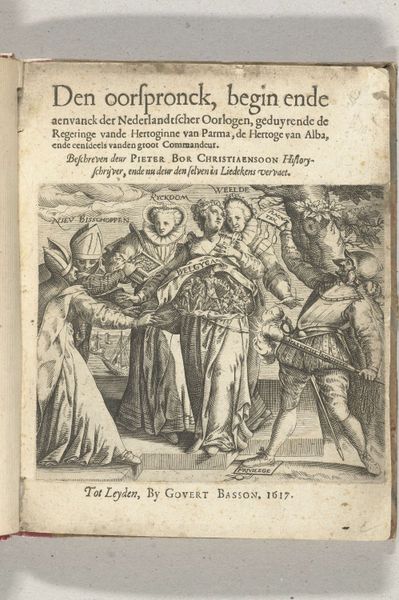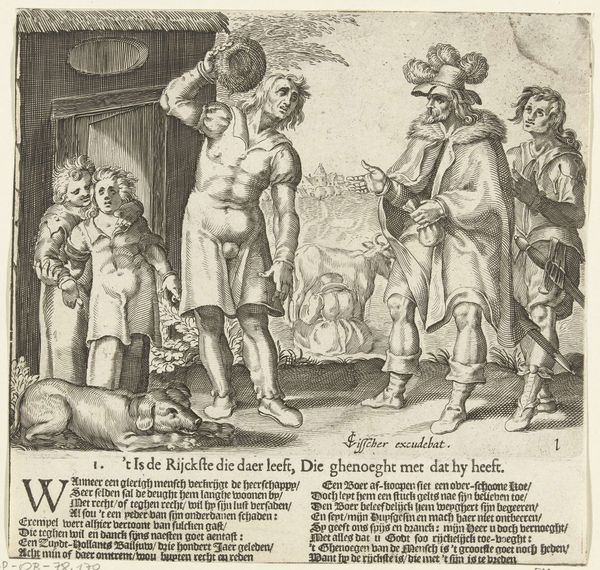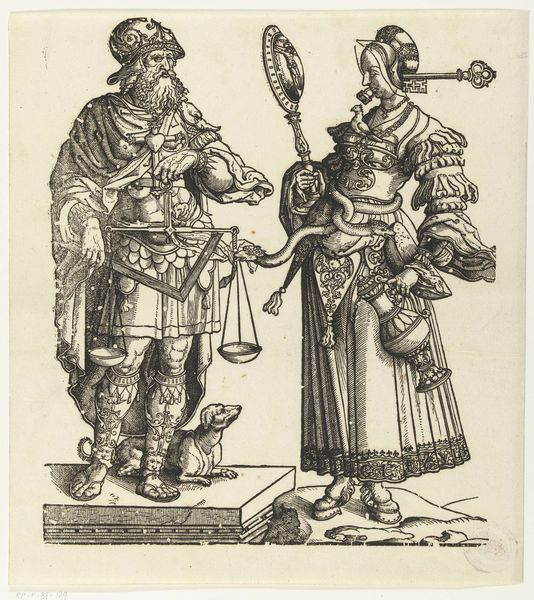
De katholieken smeken Filips II in te grijpen in de Nederlanden, 1566 1572
0:00
0:00
drawing, print, paper, ink, engraving
#
portrait
#
drawing
#
medieval
#
allegory
#
narrative-art
#
dutch-golden-age
# print
#
paper
#
ink
#
group-portraits
#
history-painting
#
engraving
Dimensions: height 185 mm, width 135 mm
Copyright: Rijks Museum: Open Domain
Editor: Here we have a 1572 engraving, “De katholieken smeken Filips II in te grijpen in de Nederlanden, 1566," attributed to an anonymous artist. It depicts a group of figures pleading before who I assume is King Philip II. There's a palpable sense of tension and desperation emanating from the kneeling figures. How do you interpret this work? Curator: This engraving offers a powerful glimpse into the religious and political turmoil of the 16th century Netherlands. Beyond a simple historical record, it functions as a piece of political propaganda. Consider the visual hierarchy: Philip II is elevated, rigid, seemingly unmoved by the pleas of the Catholics. It is crucial to consider how such images were circulated and consumed, shaping public opinion during a period of intense conflict and religious reformation. Who do you think the intended audience for this engraving was, and what message was it meant to convey? Editor: It seems clearly biased against Philip II. I imagine the intended audience would be those sympathetic to the plight of the Dutch and critical of Spanish rule. So perhaps its intended audience would be Protestant sympathizers and Netherlandish people as a whole? Curator: Precisely! Think about the power dynamics at play. The artist, likely working within a circle opposed to Spanish domination, uses the visual language of the print to construct a narrative of oppression and injustice. The very act of creating and distributing such an image was an act of resistance. In what other ways do you see power dynamics influencing the artist's representation of this event? Editor: The body language speaks volumes. The kneeling figures are diminished and submissive. I noticed the inclusion of religious figures –monks and bishops. So religion must play a key role. Curator: Exactly. This engraving speaks to how religious and political identities were weaponized during the Dutch Revolt. What begins as mere sectarian division devolves into the theater of political conflict. Editor: This really shines a light on art's function during conflicts. Thanks for making the history accessible! Curator: My pleasure. Remembering how these prints informed a visual rhetoric around identity is important. It makes one consider how the production of images continues to play a pivotal role in contemporary sociopolitical struggles.
Comments
No comments
Be the first to comment and join the conversation on the ultimate creative platform.
